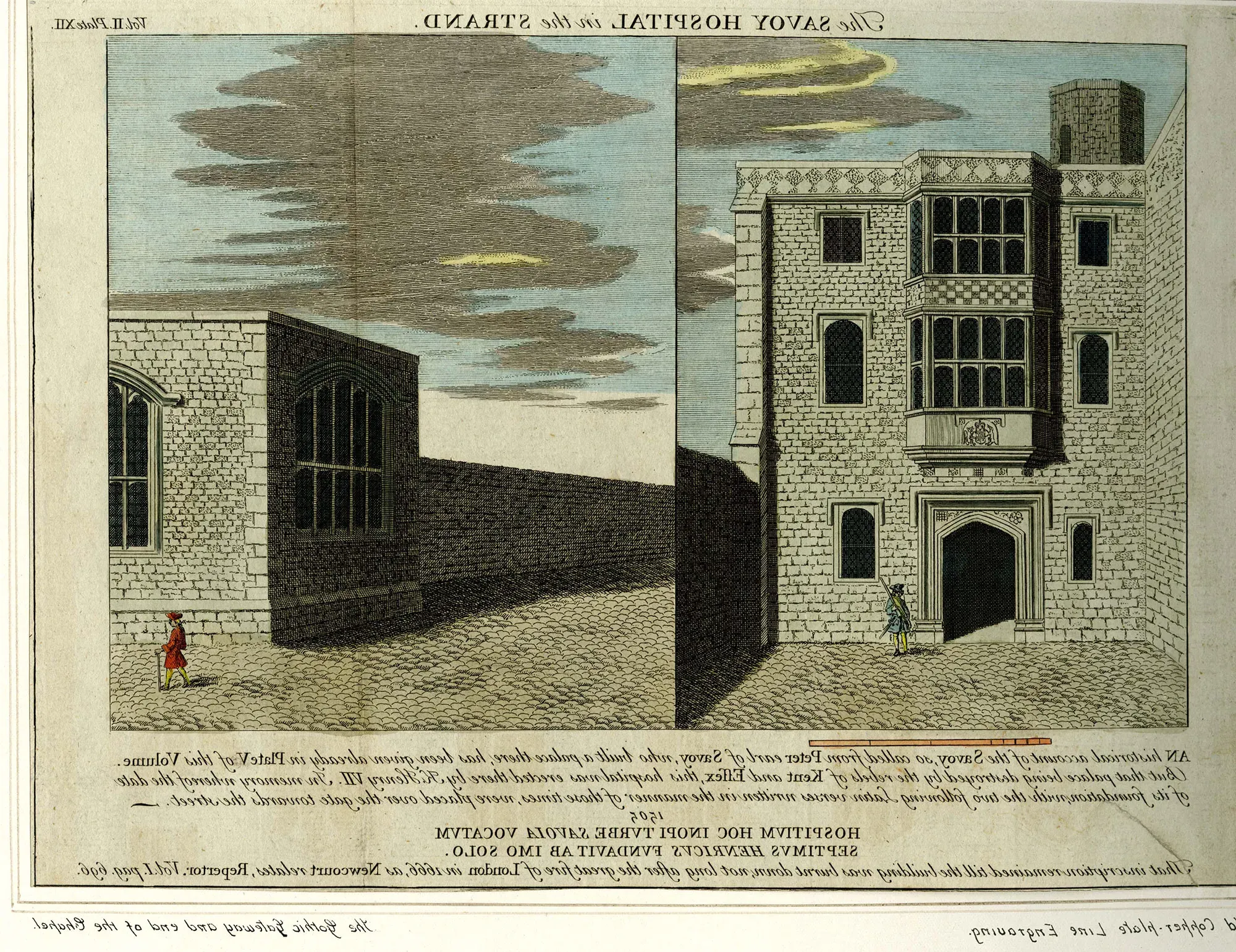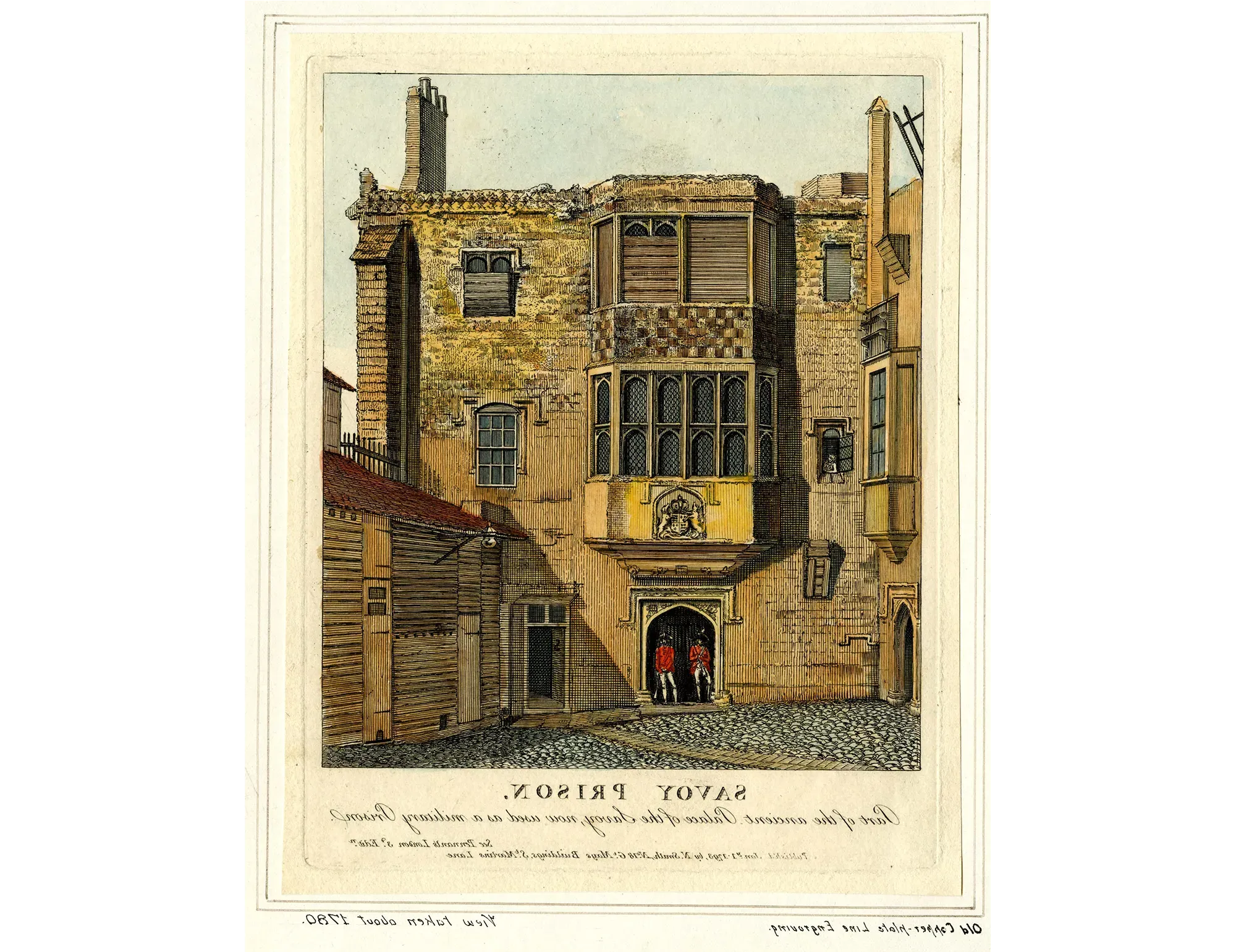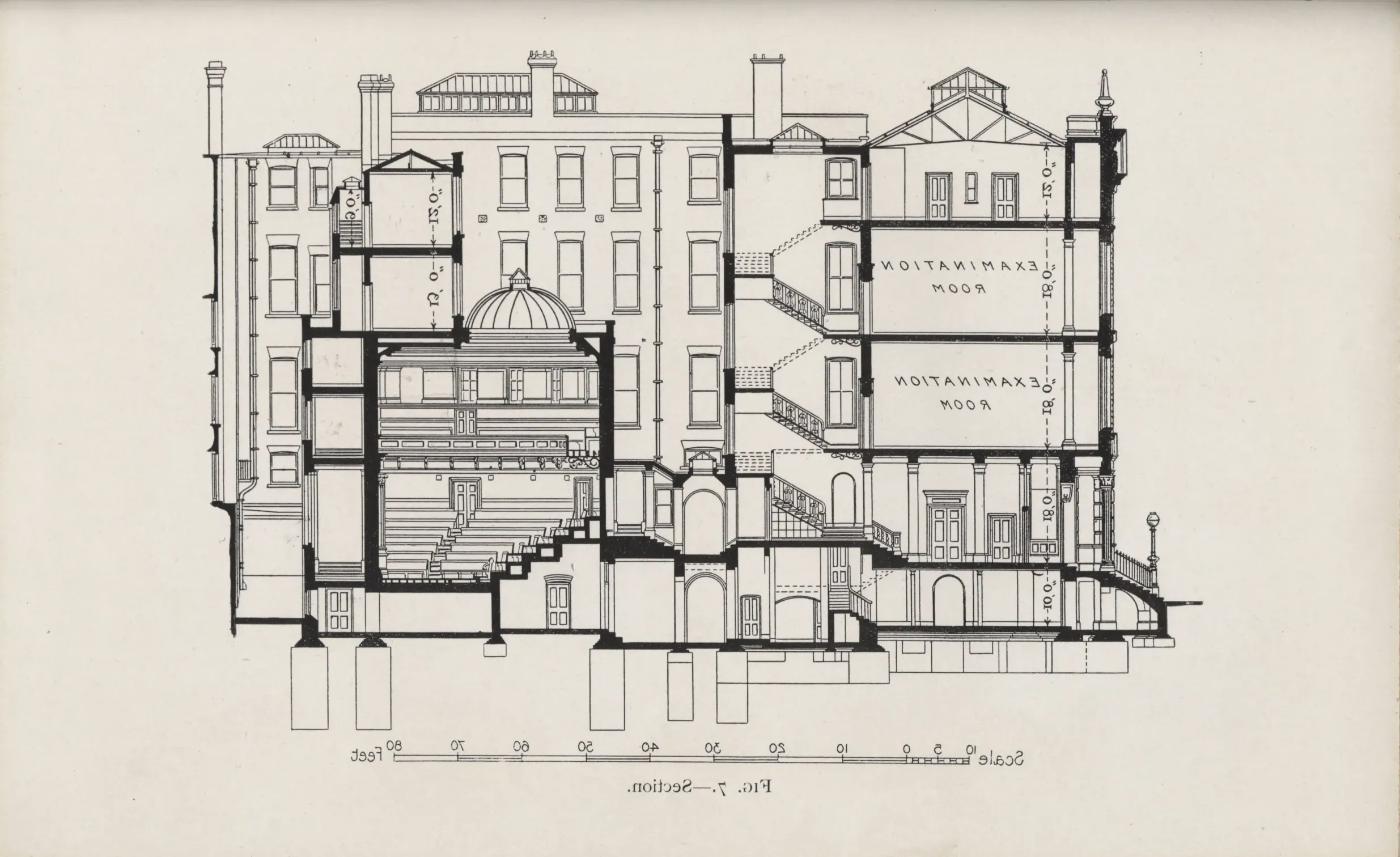The ancient site

A view of the Savoy from the River Thames 1736
The area of the Savoy Manor takes its name from Peter, Count of Savoy, who was given the land by Henry III on 12 February 1246. He built a palace on this site but after his death in 1268 the property was left to a hospice in Savoy. However, his niece, Eleanor of Provence, Queen to Henry III bought back the land. The land was given to her son, Edmund Plantagenet, the first Earl of Lancaster. Successive Earls of Lancaster extended the site and furnished the Savoy Palace in wonderful style, culminating in the efforts of John of Gaunt, using his booty from wars with France and Spain.
During the Peasant's Revolt of 1381, both John of Gaunt and his palace became a target. A crowd marched on London, burnt down the palace and destroyed its contents. The palace was not restored but rather modified to serve as a prison for the Duchy during the 15th and 16th centuries.
A hospital for the relief of the poor
It was not until 1509, on the death of Henry VII, that the Savoy was to be rebuilt for the greater good. Henry VII left a substantial amount of money in his will for a hospital, built to provide relief for up to 100 paupers a night with a staff of doctors and nursing sisters. The last poor were admitted in 1642, the hospital then being used as barracks.
The hospital was completed in 1517 when the executors of Henry's will named it the Hospital of Henry VII King of England of the Savoy. Despite its good intentions, mismanagement and corruption sent the hospital into decline.
For the majority of the 17th century, the Savoy Hospital was not put to its intended use, housing wounded soldiers and eventually being transformed into a military barracks and prison.

The Savoy Hospital

Savoy Prison c1790
Victorian regeneration
The area further deteriorated with undesirables inhabiting the houses in the Strand, in Duchy Lane and on the riverside. Religious institutions also appeared such as a school of Jesuits and the area also provided a retreat for the families of poor French Protestants. In 1723 a German Lutheran Church was built on what is now part of the site occupied by the Institution of Engineering and Technology.
Parts of ancient Savoy remained until the beginning of the 19th century but most buildings were swept away for the construction of Waterloo Bridge (1817) and the Victoria Embankment (1870). With this regeneration, the Savoy was finally returning to a place of prestige.
During the renovation of Savoy Place, an archaeological dig uncovered more secrets of the past. To find out more please read an archaeological excavation at Savoy Place.

HRH The Prince Regent and Duke of Wellington first visit to Waterloo Bridge 1817
Savoy Place - "no finer site in London"

Savoy Place 1908
The building now occupied by the IET was originally built as a joint Examination Hall for the Royal College of Physicians and the Royal College of Surgeons, completed in 1887 and designed to accommodate 600 candidates.
The foundation stone, which can be seen at the front of the building, was laid by Queen Victoria on 24th March 1886. During 1887-9 the Examination Hall was extended to include classrooms, laboratories and a lecture theatre.
On 1 June 1909, the Institution purchased the remaining seventy-six years of the ninety-nine year lease, held by the Duchy of Lancaster.
The Institution had been founded 38 years before, in 1871, as the Society of Telegraph Engineers.
As the application of electrical engineering spread beyond telegraphy to power, lighting and other areas, the name was changed to the Institution of Electrical Engineers. It was granted a Royal Charter in 1921.
By the early 1900s, the Institution had over 5000 members and was collecting funds for the purchase of its own building.
Impressed by the Examination Hall, the President stated "There is no finer site in London..." To find out more about the history of the IET and its predecessor institutions please see the history of the IET.
The 1909 alterations, carried out by H Percy Adams and Charles Holden, included renovation of the entrance hall, the lecture theatre and the creation of a library from the long room on the first floor.
The entrance hall was lined with white marble and decorated with bronze friezes. The lecture theatre was panelled in Cuban mahogany, matching the interior doors on the ground floor, with carved cartouches designed by the sculptor W S Frith.
The original work can still be seen today, although both rooms have been adapted for modern use. In the late 1950s, Adams Holden and Pearson altered the façade and added the top storey and entrance.

Sectional Plan of Savoy Place 1908

The Library in Savoy Place 1958
Behind Savoy Place is the building originally known as Lancaster House, later Savoy Mansions. It was built in 1880 by the Savoy Building Company and had a number of occupants: it housed ale and stout merchants, the National Providence League, architects, solicitors and in 1884 Turkish baths were licensed in the basement. The building is now known as Savoy Hill House.
In 1923, the newly formed British Broadcasting Company (now the British Broadcasting Corporation) was offered spare accommodation at Savoy Place for its broadcasts. It began by leasing seven rooms and quickly expanded, taking over the West Wing by the end of the year. The BBC renamed the latter building 'Savoy Hill' and '2LO' broadcast from there until 1932. Savoy Hill was bought by the IET in 1984 and is now known as Savoy Hill House.

Savoy Hill Mansions c1928
The land is still owned by the present Duke of Lancaster - the King.
Since its construction in the late 19th century, the building, now occupied by the IET, has undergone much refurbishment.
The most recent renovation was completed in 2015, which added new meeting rooms and a member-first area dedicated to IET members.
Savoy Place is now a great meeting place ideal for networking, research and inspiring events.
More information can be found on the IET London: Savoy Place website.

The modern day IET London: Savoy Place façade
